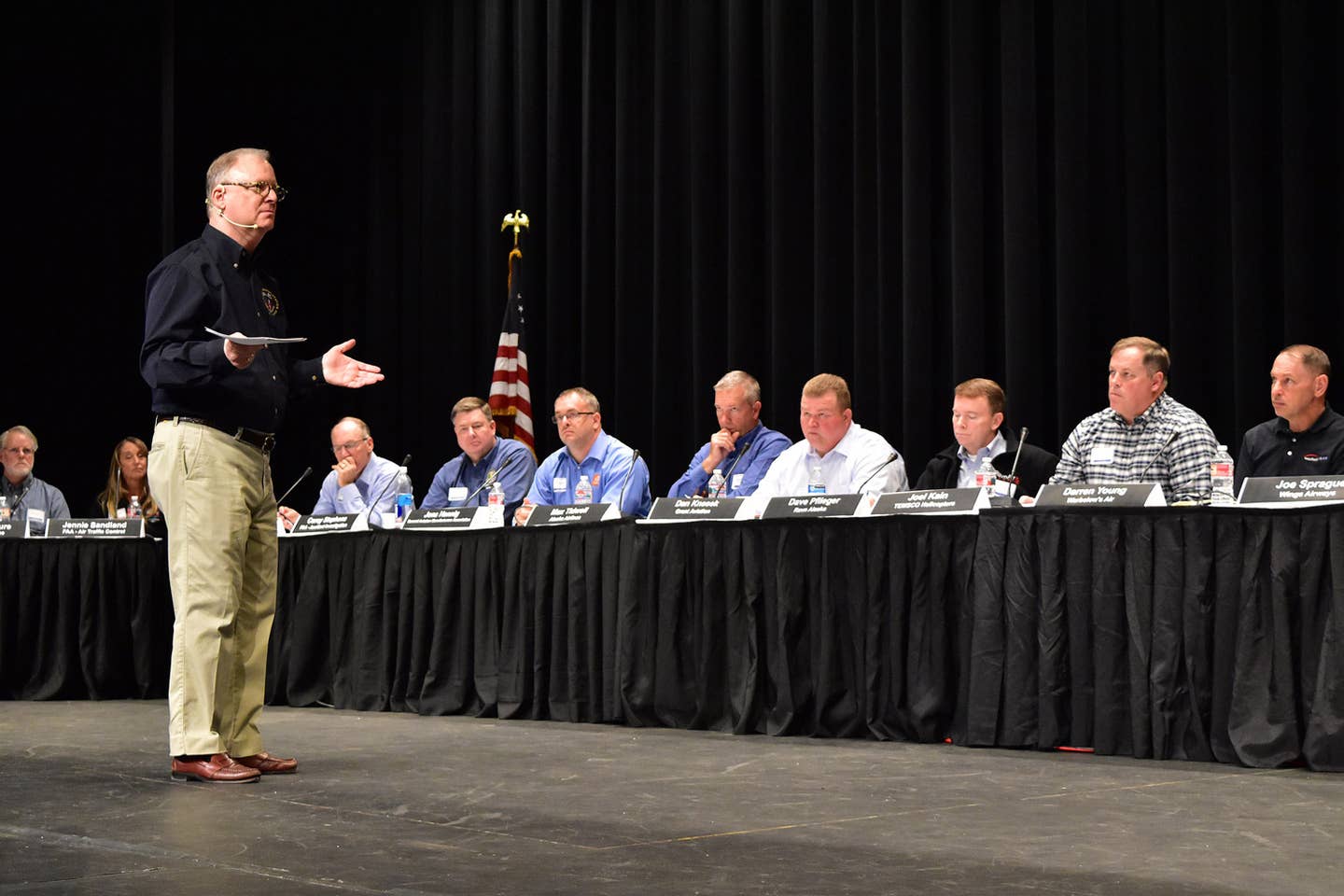
NTSB Chairman Robert Sumwalt engages with panelists during the risk management panel of the Part 135 Flight Operations Roundtable held at the University of Alaska. NTSB/Chris O’Neil
In response to what the National Transportation Safety Board (NTSB) considers to be "far too many preventable accidents involving Part 135 flight operations in Alaska," the Board convened a Part 135 Flight Operations Roundtable on September 6, 2019, in Anchorage. Since 2008, the NTSB has investigated 182 accidents involving fixed-wing scheduled and non-scheduled Part 135 operations in Alaska, resulting in 74 fatalities.
The NTSB cites terrain conditions, challenging weather, and congested airspace as factors, but believes many of these accidents could have been avoided if operators had implemented safety management systems (SMS), installed flight data monitoring (FDM) devices, and ensured pilots received comprehensive controlled-flight into terrain (CFIT) avoidance training.
The Alaska roundtable included four one-hour panels on the subjects of training, risk management, technology, and infrastructure. In the discussions, moderators Robert Sumwalt, NTSB Chairman, Kerry Long, FAA Alaskan Regional Administrator, and Dana Schulze, NTSB Director of Aviation Safety, focused on preventing three types of accidents: controlled flight into terrain; loss of control; and mid-air collisions.
“Alaska is different, but the Alaska difference is a starting point, not a conclusion,” said Sumwalt in his remarks to the panel. “We’re working together to assess Alaskan risks and create Alaskan mitigations, and for the roundtable we've brought together Part 135 operators from around the state, aviation associations, FAA representatives, and safety professionals.”
Improving the safety of Part 135 flight operations is on the NTSB’s 2019–2020 “Most Wanted List” of transportation safety improvements. Those ideas to improve Part 135 safety are being developed in part from the NTSB’s investigations of numerous fatal accidents in Alaska. “The FAA does not require Part 135 flight operators to meet the same safety requirements as airlines, and if the FAA and industry [do] not address these safety gaps, we will undoubtedly see more accidents involving the traveling public in Alaska,” the NTSB said.

Subscribe to Our Newsletter
Get the latest FLYING stories delivered directly to your inbox






